Abstract
Fecal bile salt excretion was studied in healthy volunteers, patients with regional ileitis, and patients with ileal resection. 10 μc of carboxyl-14C-cholic acid was given orally. Stools and urine were collected daily for 5-10 days, the bile salts extracted, and the radioactivity assayed. Urinary excretion was negligible. All patients with ileal resection excreted bile salts in the feces significantly faster than controls, and five of the six excreted 50% of the radioactivity within 24 hr. Their mean intestinal transit time was 5.6 hr compared to 26 hr for the controls. Two of the three patients with regional ileitis excreted bile salts almost as rapidly as patients with ileal resection. Vitamin B12 absorption was also defective in those patients, but the intestinal transit time was not decreased.
To study the effect of rapid intestinal transit on bile salt excretion, four of the control subjects were given orally 1200 ml of 10% mannitol for 7 days, and the labeled cholic acid excretion rate was again studied. The mean intestinal transit time was markedly shortened, mild steatorrhea developed, and the fecal bile salt excretion rate increased slightly.
It is concluded that ileal resection and ileal disease are major factors and rapid intestinal transit is a minor factor in causing excessive fecal bile salt loss. The relevance of bile salt wastage to lipid malabsorption is unknown because of insufficient information about compensatory jejunal absorption, maximum rate of hepatic bile salt synthesis, and the minimum necessary intraluminal concentration of conjugated bile salt.
Full text
PDF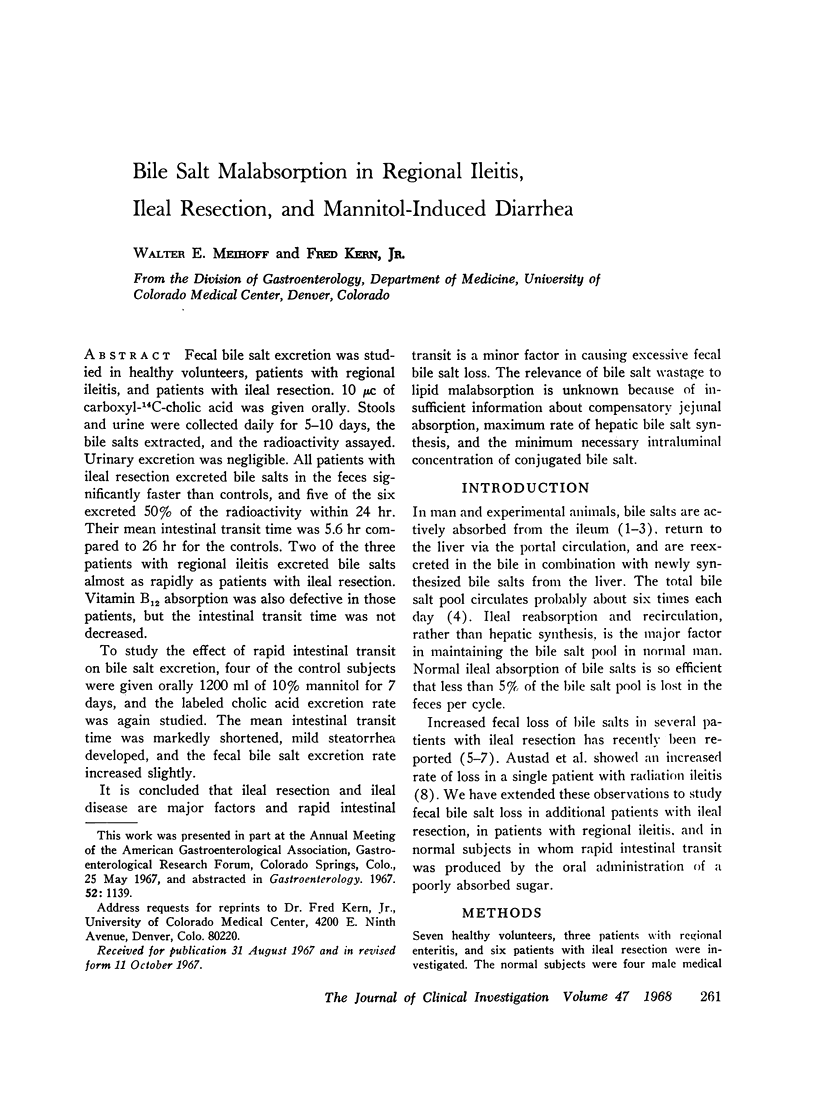
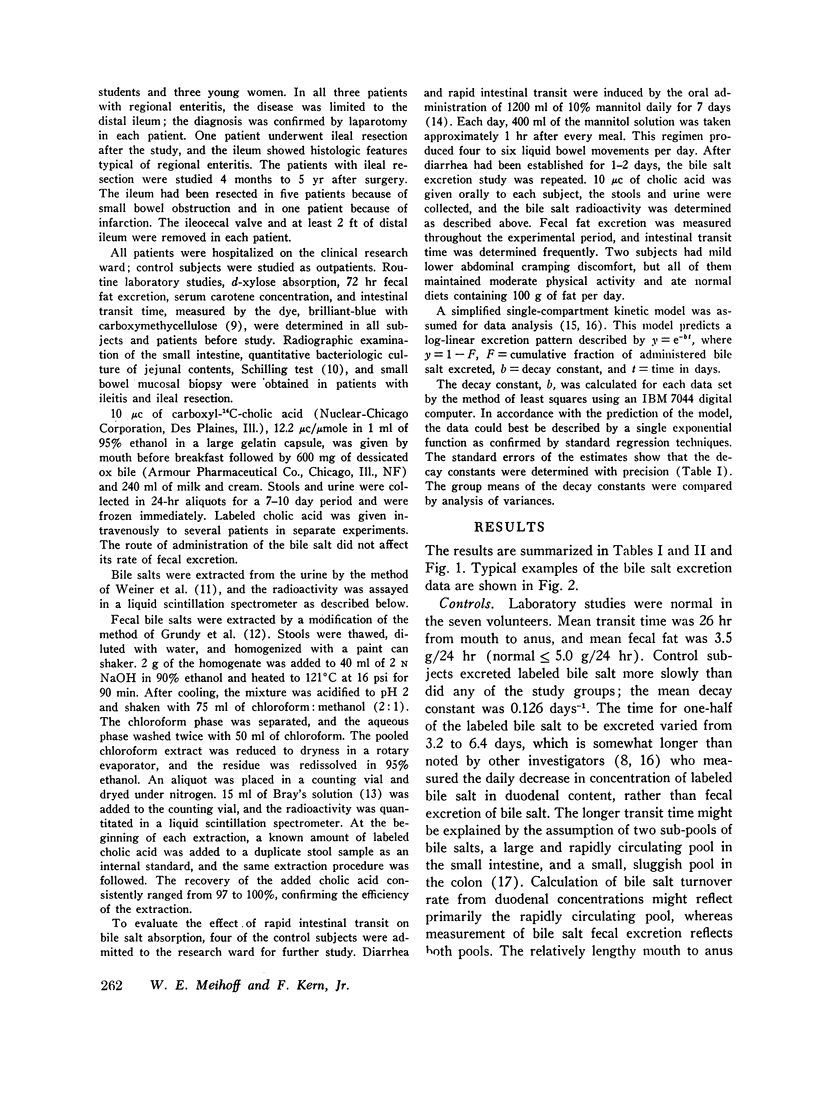
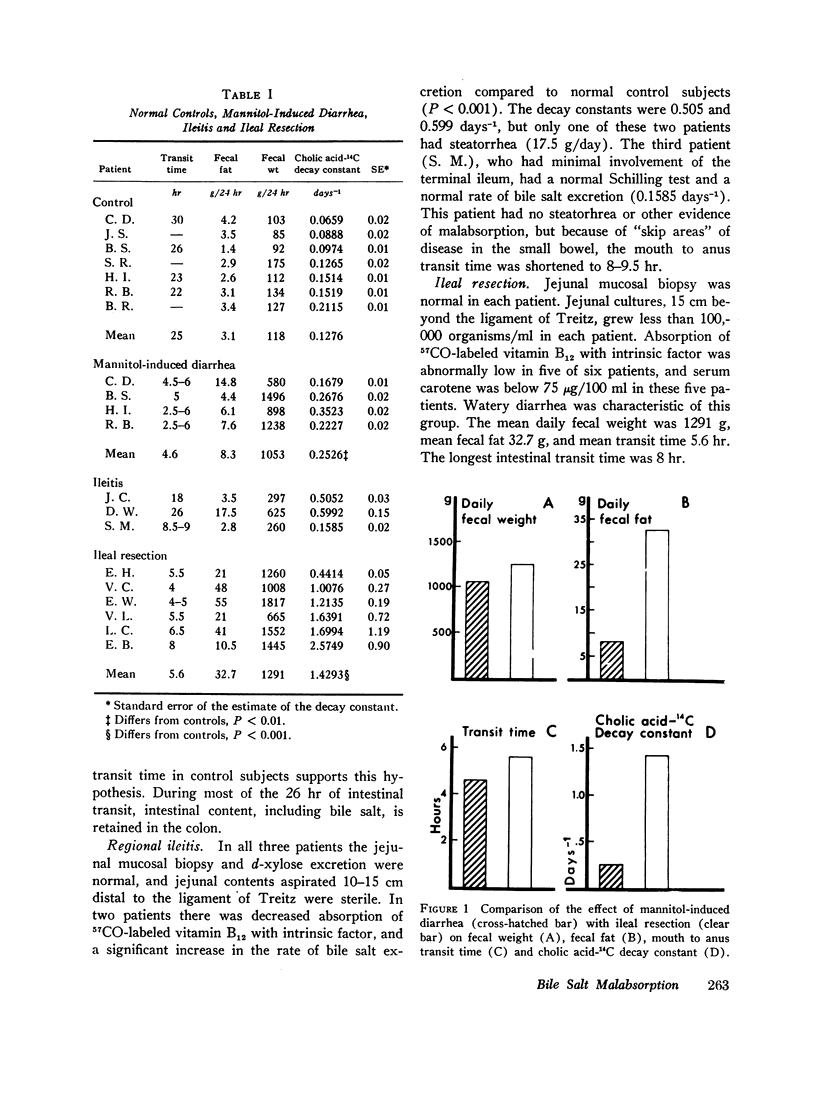
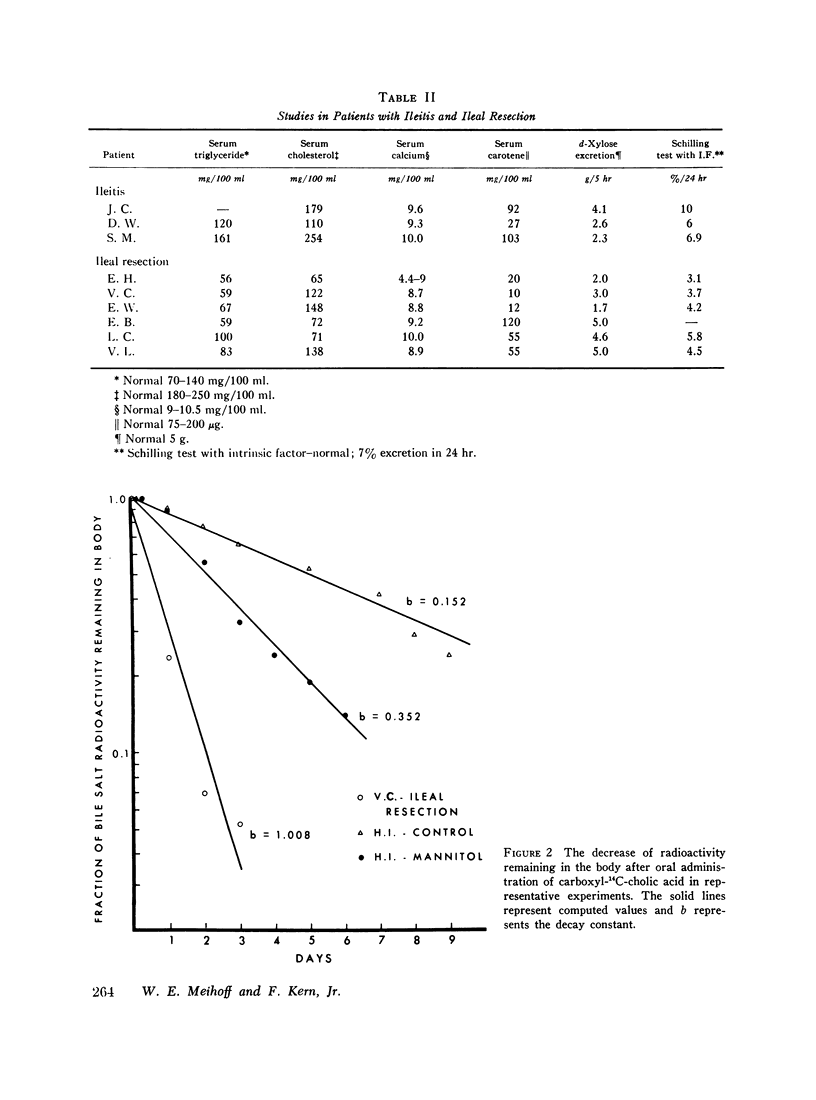
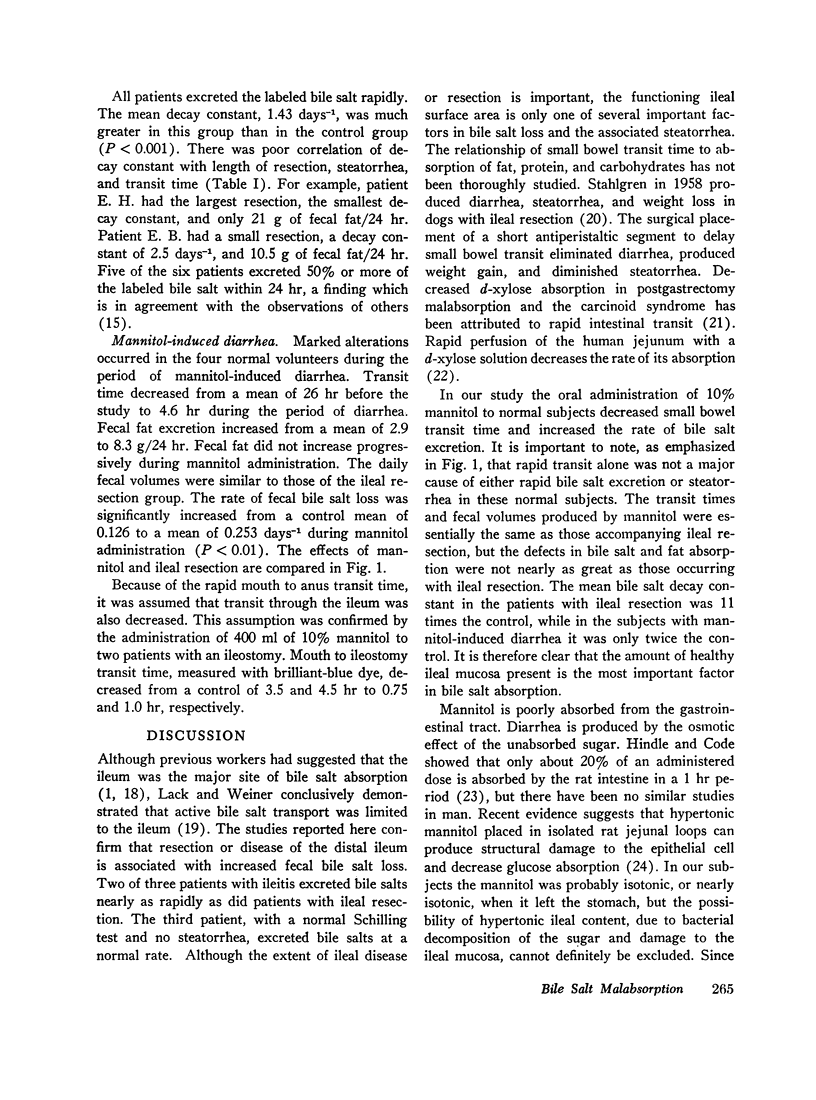
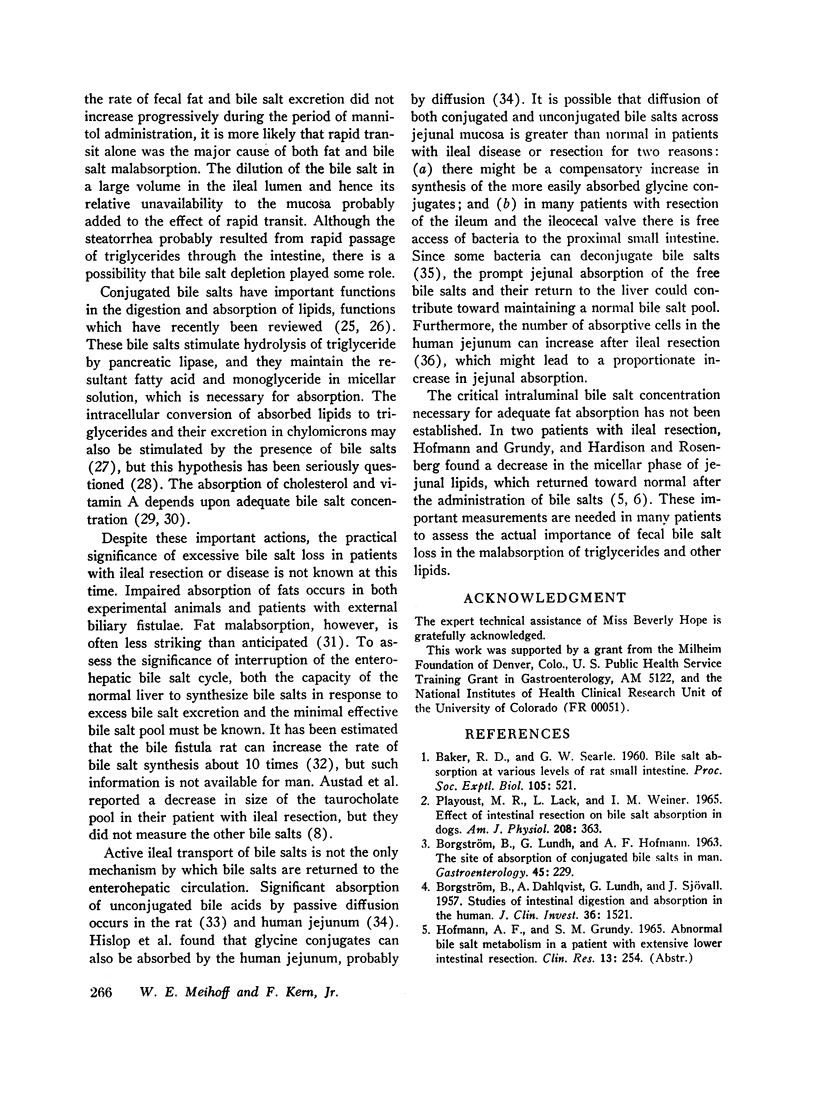
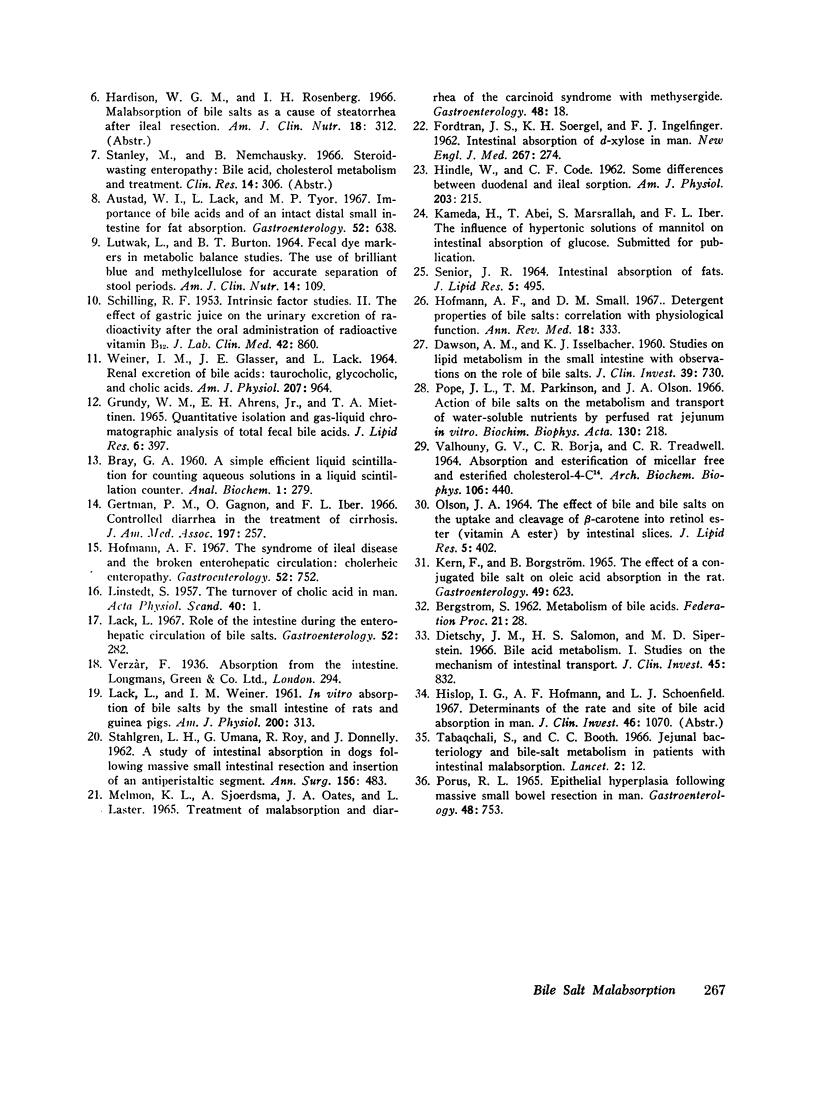
Selected References
These references are in PubMed. This may not be the complete list of references from this article.
- Austad W. I., Lack L., Tyor M. P. Importance of bile acids and of an intact distal small intestine for fat absorption. Gastroenterology. 1967 Apr;52(4):638–646. [PubMed] [Google Scholar]
- BAKER R. D., SEARLE G. W. Bile salt absorption at various levels of rat small intenstine. Proc Soc Exp Biol Med. 1960 Dec;105:521–523. doi: 10.3181/00379727-105-26163. [DOI] [PubMed] [Google Scholar]
- BORGSTROEM B., LUNDH G., HOFMANN A. THE SITE OF ABSORPTION OF CONJUGATED BILE SALTS IN MAN. Gastroenterology. 1963 Aug;45:229–238. [PubMed] [Google Scholar]
- BORGSTROM B., DAHLQVIST A., LUNDH G., SJOVALL J. Studies of intestinal digestion and absorption in the human. J Clin Invest. 1957 Oct;36(10):1521–1536. doi: 10.1172/JCI103549. [DOI] [PMC free article] [PubMed] [Google Scholar]
- DAWSON A. M., ISSELBACHER K. J. Studies on lipid metabolism in the small intestine with observations on the role of bile salts. J Clin Invest. 1960 May;39:730–740. doi: 10.1172/JCI104090. [DOI] [PMC free article] [PubMed] [Google Scholar]
- Dietschy J. M., Salomon H. S., Siperstein M. D. Bile acid metabolism. I. Studies on the mechanisms of intestinal transport. J Clin Invest. 1966 Jun;45(6):832–846. doi: 10.1172/JCI105399. [DOI] [PMC free article] [PubMed] [Google Scholar]
- FORDTRAN J. S., SOERGEL K. H., INGELFINGER F. J. Intestinal absorption of D-xylose in man. N Engl J Med. 1962 Aug 9;267:274–279. doi: 10.1056/NEJM196208092670602. [DOI] [PubMed] [Google Scholar]
- GRUNDY S. M., AHRENS E. H., Jr, MIETTINEN T. A. QUANTITATIVE ISOLATION AND GAS--LIQUID CHROMATOGRAPHIC ANALYSIS OF TOTAL FECAL BILE ACIDS. J Lipid Res. 1965 Jul;6:397–410. [PubMed] [Google Scholar]
- HINDLE W., CODE C. F. Some differences between duodenal and ileal sorption. Am J Physiol. 1962 Aug;203:215–220. doi: 10.1152/ajplegacy.1962.203.2.215. [DOI] [PubMed] [Google Scholar]
- Hofmann A. F., Small D. M. Detergent properties of bile salts: correlation with physiological function. Annu Rev Med. 1967;18:333–376. doi: 10.1146/annurev.me.18.020167.002001. [DOI] [PubMed] [Google Scholar]
- Hofmann A. F. The syndrome of ileal disease and the broken enterohepatic circulation: cholerheic enteropathy. Gastroenterology. 1967 Apr;52(4):752–757. [PubMed] [Google Scholar]
- Kern F., Jr, Borgström B. The effect of a conjugated bile salt on oleic acid absorption in the rat. Gastroenterology. 1965 Dec;49(6):623–631. [PubMed] [Google Scholar]
- LACK L., WEINER I. M. In vitro absorption of bile salts by small intestine of rats and guinea pigs. Am J Physiol. 1961 Feb;200:313–317. doi: 10.1152/ajplegacy.1961.200.2.313. [DOI] [PubMed] [Google Scholar]
- LUTWAK L., BURTON B. T. FECAL DYE MARKERS IN METABOLIC BALANCE STUDIES. THE USE OF BRILLIANT BLUE AND METHYLCELLULOSE FOR ACCURATE SEPARATION OF STOOL PERIODS. Am J Clin Nutr. 1964 Feb;14:109–111. doi: 10.1093/ajcn/14.2.109. [DOI] [PubMed] [Google Scholar]
- Lack L., Weiner I. M. Role of the intestine during the enterohepatic circulation of bile salts. Gastroenterology. 1967 Feb;52(2):282–287. [PubMed] [Google Scholar]
- MELMON K. L., SJOERDSMA A., OATES J. A., LASTER L. TREATMENT OF MALABSORPTION AND DIARRHEA OF THE CARCINOID SYNDROME WITH METHYSERGIDE. Gastroenterology. 1965 Jan;48:18–24. [PubMed] [Google Scholar]
- Olson J. A. The effect of bile and bile salts on the uptake and cleavage of beta-carotene into retinol ester (vitamin A ester) by intestinal slices. J Lipid Res. 1964 Jul;5(3):402–408. [PubMed] [Google Scholar]
- PLAYOUST M. R., LACK L., WEINER I. M. EFFECT OF INTESTINAL RESECTION ON BILE SALT ABSORPTION IN DOGS. Am J Physiol. 1965 Feb;208:363–369. doi: 10.1152/ajplegacy.1965.208.2.363. [DOI] [PubMed] [Google Scholar]
- PORUS R. L. EPITHELIAL HYPERPLASIA FOLLOWING MASSIVE SMALL BOWEL RESECTION IN MAN. Gastroenterology. 1965 Jun;48:753–757. [PubMed] [Google Scholar]
- SCHILLING R. F. Intrinsic factor studies II. The effect of gastric juice on the urinary excretion of radioactivity after the oral administration of radioactive vitamin B12. J Lab Clin Med. 1953 Dec;42(6):860–866. [PubMed] [Google Scholar]
- SENIOR J. R. INTESTINAL ABSORPTION OF FATS. J Lipid Res. 1964 Oct;5:495–521. [PubMed] [Google Scholar]
- STAHLGREN L. H., UMANA G., ROY R., DONNELLY J. A study of intestinal absorption in dogs following massive small intestinal resection and insertion of an antiperistaltic segment. Ann Surg. 1962 Sep;156:483–492. doi: 10.1097/00000658-196209000-00015. [DOI] [PMC free article] [PubMed] [Google Scholar]
- Tabaqchali S., Booth C. C. Jejunal bacteriology and bile-salt metabolism in patients with intestinal malabsorption. Lancet. 1966 Jul 2;2(7453):12–15. doi: 10.1016/s0140-6736(66)91744-2. [DOI] [PubMed] [Google Scholar]
- VAHOUNY G. V., BORJA C. R., TREADWELL C. R. ABSORPTION AND ESTERIFICATION OF MICELLAR FREE AND ESTERIFIED CHOLESTEROL-4-C14. Arch Biochem Biophys. 1964 Jul 20;106:440–446. doi: 10.1016/0003-9861(64)90213-9. [DOI] [PubMed] [Google Scholar]
- WEINER I. M., GLASSER J. E., LACK L. RENAL EXCRETION OF BILE ACIDS: TAUROCHOLIC, GLYCOCHOLIC, AND COLIC ACIDS. Am J Physiol. 1964 Nov;207:964–970. doi: 10.1152/ajplegacy.1964.207.5.964. [DOI] [PubMed] [Google Scholar]


